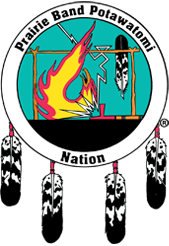January 26, 2012 –
Blueprint for an America Built to Last and Indian Country
Posted by Kimberly Teehee on January 25, 2012 at 05:14 PM EST
In yesterday’s State of the Union address, the President laid out a blueprint for an economy that’s built to last – an economy built on American manufacturing, American energy, skills for American workers, and a renewal of American values. The President has been clear that we need to do more to create jobs and help economic growth. But under his leadership and thanks to action taken by the President, the economy is growing again. The economy has added a total of nearly 3.2 million private sector jobs over the last 22 months.
Last night, the President outlined a series of ideas to build an economy that works for everyone, one that will bring about a new era of American manufacturing, and promote homegrown and alternative energy sources. The President’s Blueprint for an America Built to Last includes the following initiatives that will benefit Indian Country:
- Prevent tax increases for Native American families by extending the payroll tax cut: The President challenged Congress to strengthen the economic recovery by extending the payroll tax cut for the rest of the year so that taxes don’t go up on American workers. About 1.5 million Native American workers – throughout urban, rural, reservation and village communities – will benefit from the extension and expansion of the payroll tax cut, giving them and their families more money to keep our local economies strong at this critical time. Today, one of the most important ways we can continue to support economic growth in Indian Country is through the extension of the payroll tax cut.
- Forge new partnerships between community colleges – including tribal colleges – and businesses to train and place 2 million skilled workers: Many industries have difficulty filling jobs requiring specific technical skills, even with many Americans still looking for work. In coming years, America will need to fill millions of mid- and high-level skilled positions in industries from healthcare to advanced manufacturing, clean energy to information technology. The President proposed a new initiative to train and place two million Americans in good jobs through partnerships between businesses and community colleges that give workers the skills employers explicitly need. The program is modeled on efforts by employers and community colleges from Charlotte and Chicago to Orlando and Louisville. To address future workforce needs, the President will support partnerships between high schools and industry to create more career academies, which combine instruction in academic subjects and industry skills.
- Help start-ups and small businesses in Indian Country succeed and create jobs by reforming regulations and expanding tax relief: Start-ups and small businesses create most of the new net jobs in this country. The President is proposing to build on measures he has already taken to enact 17 small business tax cuts through additional tax relief to start-ups and small businesses that are creating jobs and increasing wages and by calling for further measures to expand access to capital for small businesses by simplifying and streamlining regulations.
These initiatives build on the progress that’s already underway. In Indian Country, we have made significant strides over the past three years and continue to strengthen the government-to-government relationship with tribal governments and improve the quality of life in Indian Country. Last month, for the third year, President Obama hosted the White House Tribal Nations Conference in Washington, DC, and discussed the work he’s done to improve the relationship between tribal nations and the federal government, and to achieve a brighter future for tribal nations. It’s a set of changes that is starting to take effect. As he stated during his remarks at the Conference last month:
“It’s the Native American-owned small business that’s opening its doors, or a worker helping a school renovate. It’s new roads and houses. It’s wind turbines going up on tribal lands, and crime going down in tribal communities.”
And in conjunction with the Tribal Nations Conference last, the President signed anExecutive Order that establishes an Initiative to expand educational opportunities and improve educational outcomes for all American Indian and Alaska Native students, including opportunities to learn their Native languages, cultures, and histories, and to receive a complete and competitive education that prepares them for college and career, and for productive and satisfying lives.
But the President understands that our work is far from done. Building strong, prosperous Native American economies is a priority for this Administration, and President Obama believes that tribal leaders must be part of the solution and have a seat at the table. Working together, the President intends to keep moving forward to achieve a brighter future for tribal nations.
As President Obama said last night, “Those of us who’ve been sent here to serve can learn a thing or two from the service of our troops. When you put on that uniform, it doesn’t matter if you’re black or white; Asian, Latino, Native American; conservative, liberal; rich, poor; gay, straight. When you’re marching into battle, you look out for the person next to you, or the mission fails. When you’re in the thick of the fight, you rise or fall as one unit, serving one nation, leaving no one behind.”
For more information about this Administration’s accomplishments in Indian Country, our recently released report, “Achieving a Brighter Future for Tribal Nations,” provides a summary of some of the many actions the Obama Administration has taken to address the concerns of American Indians and Alaska Natives. The report is available HERE.
